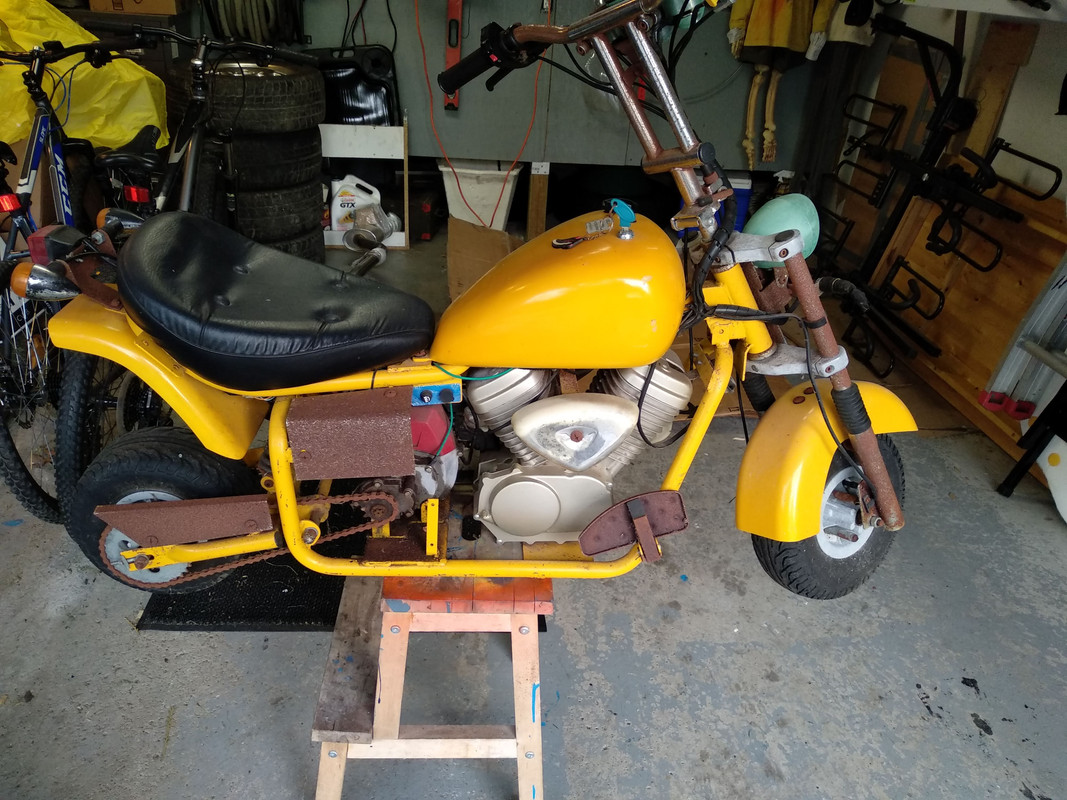
Stepper motors have some unique advantages as well as disadvantages over DC motors.
MOTOR MOUNT PLATE FOR MINI BIKE CHOPPER DRIVERS
6VDC Supply connected to VM2 and routed to Motor Driver 1Ī Single 6VDC supply on VM2 input being routed to both motor drivers Stepper Motors OverviewĮach MOTORplate can drive two bipolar stepper motors. Remember: the voltage on these supplies cannot exceed 15VDC! Lets look at a few examples:Ī Single 12VDC supply on VM1 input being routed to both motor driversġ2VDC Supply connected to VM1 and routed to Motor Driver 2. Then move the jumper on the power steering to the appropriate source. To deliver more power to your motor, you should attach a separate power supply to VM1 or VM2. In addition, this option only supports motors that can operate at 5VDC.ĭefault Power Steering Settings – on board RPI 5VDC routed to both motor drivers Driving anything greater than 500mA will most likely cause your system to reboot from a power droop. However, we strongly advise against this unless you have a VERY good source of 5VDC or if you are driving small motors.

The equation for motor output power is Po=torque Motors come in all shapes and sizes and are designed to operate at different voltages. Details on connecting to these terminals is covered in more detail below. The MOTORplate has two headers that allow you to choose between three power sources for each of the motor drivers. These are shown in the diagram below. Details on connecting to these terminals is covered in more detail below in the Connections chapter. The MOTORplate has two, 10 pin terminal blocks for the attachment of motors and sensors.
MOTOR MOUNT PLATE FOR MINI BIKE CHOPPER CODE
An on-board microprocessor connected directly to the Raspberry Pi interfaces directly to these chips which simplifies the code required to drive a motor. Since the H-bridge transistors are MOS instead of bipolar, these chips run cool while providing more power to the motors. They can operate with motor voltages as high as 15VDC and at an average current of 1.2 Amps and peak currents as high as 3.2 Amps. Each chip contains two H-bridges capable of driving a single bipolar stepper motor or two DC motors. These are two Toshiba TB6612FNG chips that interface directly to your motors. Use the diagram below as a guide for setting the address of your MOTORplate:

Note that each Pi-Plate model has a unique TYPE address so it’s possible to have a MOTORplate stacked on top of a DAQCplate with both set to address 0. The address can be set from 0 to 7, so up to eight MOTORplates can be used in a single stack. This header, along with the three shunts connected to it, allow you to set the address of your MOTORplate.

If you you need access to the extra pins of the B+, A+, and Revision 2 of the RPI then you can solder in the included 2X7 stacking connector. As shipped, this connector works with all versions of the Raspberry Pi. This is the connector that attaches to the Raspberry Pi or to another Pi-Plate if you are stacking your boards. Below, we have highlighted the major functional areas: Before diving into the details of your Pi-Plate, let’s take a quick tour of the major features. Congratulations on the purchase of your MOTORplate! We believe that you’ll find it the most powerful motor controller for the Raspberry Pi on the market today.


 0 kommentar(er)
0 kommentar(er)
